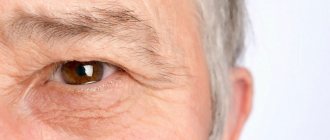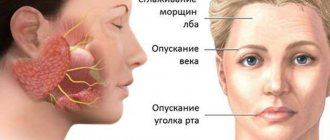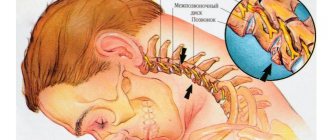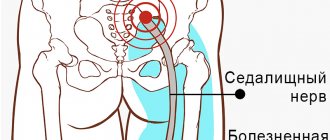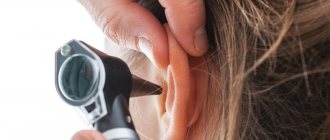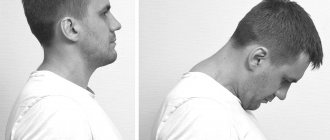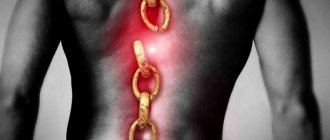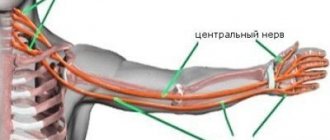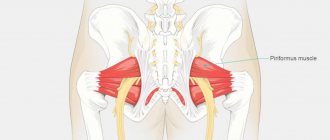Ear pain - mild or intense, shooting or aching - is a symptom that can indicate both a disease of the hearing organ and pathological processes occurring in nearby organs and tissues. According to statistics, otitis media is the most common cause of ear pain. However, the diversity of its forms and many other diseases with similar symptoms require accurate diagnosis and different treatment approaches. To establish the true causes of ear pain, it is necessary to be examined by an otolaryngologist, and sometimes by a neurologist, dentist, and even a cardiologist.
At CELT you can consult an otorhinolaryngologist.
- Initial consultation – 3,000
- Repeated consultation – 2,000
Make an appointment
Otitis externa
Most often, inflammation of the outer ear is bacterial in nature.
The causes of infection may be:
- trauma to the external auditory canal, for example, from a sharp or blunt object, or from a hearing aid;
- skin defects due to eczema, psoriasis, diabetes and other diseases;
- too thorough removal of earwax, which creates an acidic environment that prevents the growth of microbes;
- frequent entry of water into the outer ear (“swimmer’s disease”).
Symptoms of external otitis:
- acute ear pain, aggravated by pressing on the tragus or pulling the earlobe;
- possible itching and a feeling of “stuffiness” in the ear;
- discharge of a purulent or bloody nature, sometimes having an unpleasant odor;
- examination reveals swelling and hyperemia of the external auditory canal;
- possible hearing loss;
- enlargement and tenderness of the lymph nodes in the neck and behind the ear on the affected side.
The course of the disease may be complicated by a perforation of the eardrum, which cannot be determined without a visit to an ENT specialist.
External otitis of fungal origin is a common phenomenon, usually occurring in patients with low immune status or due to long-term use of antibacterial drops. It is characterized by severe itching, the formation of crusts, profuse thick discharge and the absence of a therapeutic effect from the use of antibiotics.
Separately, it is worth noting the localization of a boil on the skin of the external auditory canal or inflammation of the atheroma. The clinical picture is similar to otitis externa, but upon examination there is a more localized focus of inflammation with an opening from which pus and blood can be discharged.
What to do if you have ear pain?
If you experience ear pain, you should seek medical help from our experienced doctors.
First aid
To relieve ear pain for an adult, first aid can be provided using a piece of cotton wool soaked in camphor oil or alcohol. The discomfort will decrease, but then you will still have to make an appointment with an otolaryngologist.
When a child needs help, he can be given a painkiller (children's Nurofen, the dosage is selected according to age, or paracetamol, the dose of which is 10-15 ml of the drug per 1 kg of the patient's weight). If there is no discharge from the ear canal and the body temperature is normal, it is allowed to use Otipax drops, an alcohol compress, cotton swabs soaked in camphor oil, and a napkin heated with an iron.
Vasoconstrictor medications will help improve the patency of the auditory tubes. An older child can be offered chewing gum, which will ease the painful syndrome. In case of bloody or purulent discharge, as well as in case of increased body temperature, it is necessary to call an ambulance.
Otitis media
The middle ear communicates with the nasopharynx through the Eustachian tube, through which infection can penetrate from the upper respiratory tract due to acute respiratory viral infections, influenza, sore throat, rhinitis, sinusitis and other diseases. Children are especially often affected because their Eustachian tube is short and wide, which makes it easier for infection to enter. The process can be one- or two-way.
Symptoms of acute otitis media:
- pain in the ear from moderate to severe, pulsating in nature (pain does not depend on pulling the lobe or pressing on the ear canal);
- increased body temperature;
- possible noise in the ear, dizziness, decreased hearing acuity;
- the presence of discharge (mucous, purulent, bloody) indicates a perforation of the eardrum.
With an aggressive course of the inflammatory process and the absence of adequate therapy, otitis media is fraught with such serious complications as meningitis, sepsis, intracranial abscess formation, and deafness.
Diagnosis and treatment
An otolaryngologist diagnoses and treats the causes of ear pain. The doctor can make a preliminary diagnosis during the initial examination using an otoscope. To determine the exact cause of otalgia, laboratory and instrumental research methods are used:
- audiometry to assess hearing acuity. To complete the picture, speech, tone and computer audiometry are used. Each method gives its own result, so they are often used simultaneously;
- radiography to study the structure of the middle and inner ear for the presence of temporal bone fractures, inflammatory processes, tumors and deformation of the ear canal and its elements;
- CT and MRI of the brain are prescribed as additional procedures to determine the exact localization of pathology in injuries;
- For different types of diseases, tests are prescribed: bacteriological, histological, and serological tests.
Ear pain is a symptom that requires treatment of the underlying disease. In most cases, the simultaneous use of medications and physiotherapy is effective. So, for otitis media, rinsing with a medicinal solution and ear drops containing antibacterial, anti-inflammatory and antihistamine substances are prescribed. If pain appears as a result of the use of medications, then galantamine and adenosine triphosphate are prescribed, which accelerate regeneration processes.
Physiotherapy allows you to stop the inflammatory process and stimulate local immunity. For this purpose, microwave, laser and ultra high-frequency therapy are used. To prevent hearing loss, pneumomassage is prescribed. The procedure improves blood circulation, neutralizes inflammatory processes, promotes the resorption of scars and adhesions on the eardrum.
The purpose of surgical treatment is to clean the ear canal from pus, eliminate the consequences of injury, abscesses, benign neoplasms and tumors containing dead cells.
Depending on the type of damage, reconstructive operations are prescribed:
- myringoplasty is an operation to restore the integrity of the eardrum;
- tympanoplasty is an operation to restore the integrity of the middle ear bones;
- Mastoidoplasty is an operation to reconstruct the mastoid process of the temporal bone, destroyed by mastoiditis, a complication of purulent otitis.
Inflammation of the inner ear (labyrinthitis)
The labyrinth is an organ of hearing and balance, is richly innervated and includes auditory and kinetic receptors, so its inflammation causes:
- severe ear pain and headaches;
- a sharp decrease in hearing, the appearance of noise, crackling, squeaking in the ear;
- dizziness, nausea, loss of orientation in space, horizontal nystagmus.
Labyrinthitis occurs as a result of the penetration of infection in various ways from different parts and cavities of the body:
- from the middle ear with untreated or advanced otitis media;
- with infected meninges during meningitis;
- with blood for diseases such as syphilis, tuberculosis, herpes;
- damage to the temporal region, the organ of hearing with disruption of the integrity of cells and blood vessels.
The disease requires immediate medical attention.
Other causes of acoustic neuritis
Cochlear neuritis can occur as a result of the following reasons:
- Impaired blood flow in the vessels supplying the inner ear and brain.
- Diseases of the cardiovascular system.
- Some metabolic disorders.
- Heredity.
- Neuroma is a benign tumor of the auditory nerve.
- Hematomas and tumors that compress nerve fibers.
In some cases, the cause of the disease remains unclear.
The main manifestation of cochlear neuritis is hearing loss, or hearing loss. It can be caused by various reasons.
There are two types of hearing loss:
- Conductive - associated with a violation of the passage of sound to the inner ear through the external auditory canal and the tympanic cavity.
- Neurosensory – caused by disorders of the nervous system. Sound perception suffers.
In order to determine the type of disorders and understand their causes, the doctor must carefully question, carefully examine the patient and prescribe all the necessary diagnostic methods. With neuritis of the auditory nerve, hearing loss is sensorineural in nature.
Take care of yourself, book a consultation now
Message sent!
expect a call, we will contact you shortly
Eustachite
Eustachitis is an inflammation of the canal connecting the middle ear to the nasopharynx. The degree of pain varies. Characteristic features are:
- feeling of stuffiness in the ear;
- noise and crackling in the ear, the patient hears his voice as too loud with a weakened perception of extraneous sounds;
- sensation of water pouring into the ear.
In the absence of timely treatment, eustachitis becomes chronic, causing chronic exudative otitis media.
FAQ
People suffering from such problems often ask questions regarding relief of the painful condition.
How to relieve pain?
Regardless of the cause of the disease, you should reduce the intensity of the pain syndrome by taking a painkiller. Then you need to visit an ENT doctor.
What drops to use for ear pain?
To choose drops, you need to find out what caused the pathology. A fungal infection can be cured with medications that destroy fungal pathogenic microflora. Doctors usually recommend drops that belong to one of 4 groups:
- antibiotics (Rifamycin, Norfloxacin, Ofloxacin);
- antifungal drugs (Naftifin, Candibiotic, Dexamethasone);
- painkillers with anti-inflammatory effects (Sofradex, Anauran, Dexona);
- medications that help remove sulfur plugs (Otipax, Otiliz, Cerustop).
Which doctor treats ear pain?
Otalgia is treated by an otolaryngologist. You should not delay your visit to him, as serious complications are possible:
- chronic hearing loss;
- rupture of the eardrum;
- spread of infection to neighboring anatomical areas.
You may need to consult other specialists: oncologist, dentist, neurologist.
What to do if it shoots in the ear and goes to the head?
If the patient feels a sharp shooting pain in the right ear or in the second ear, then he may be sick:
- external otitis (affects the auricle, external auditory canal, eardrum);
- otitis media (inflammation of the middle section);
- mastoiditis (inflamed mastoid process of the temporal bone);
- labyrinthitis (the inner ear is irritated due to bacteria or viruses).
When a person’s hearing organ hurts, this indicates the presence of a pathological process. If injuries are not treated and the infection is allowed to progress to the chronic stage, hearing loss will develop. Therefore, you should be attentive to your well-being and visit a doctor at the first signs of otalgia.
Ear pain of non-infectious origin
Ear tumors
Neoplasms are most often localized in the outer and middle sections; tumors of the labyrinth are an extremely rare phenomenon. Malignant formations of the outer ear are accompanied by severe pain: the pain is burning and radiates to the temple. Possible bleeding; When the ear canal is obstructed, conductive hearing loss develops. If the middle section is affected, the symptoms are similar to otitis media; a high degree of hearing loss and intense pain, increasing in the evening, should alert you. When the process spreads, symptoms of damage to neighboring structures arise: loss of orientation in space, paresis of the facial nerve, trigeminal neuralgia.
Ear injuries
- Mechanical injuries. The auricle most often suffers with the formation of lacerations and damage to cartilage. Blunt trauma to the ear usually results in a hematoma. As a result of trauma to the ear canal, the ear hurts greatly, there is a feeling of stuffiness, and bleeding is possible. Such symptoms are an indication to consult a doctor, since rupture of the eardrum and fractures of the skull bones are possible.
- Barotrauma is caused by a difference in pressure in the external environment and the cavity of the middle ear, for example, during a sharp loud sound (explosion), take-off/landing of an airplane, deep-sea immersion (diving), climbing a mountain. As a result, the eardrum is pulled inward, which is accompanied by pain, noise or ringing, and congestion in the ears. The opposite situation is also possible, when a decrease in atmospheric pressure causes the membrane to bulge outward. As a rule, unpleasant sensations go away on their own, however, if sharp pain is noted, it makes sense to check the integrity of the tympanic membrane when examined by a doctor.
- Entry of a foreign body in the form of small objects or insects causes swelling of the skin of the ear canal, itching, pain, and sometimes hearing loss. Attempting to remove a foreign object yourself can damage the eardrum.
- With burns and frostbite of the ears, **pain // of varying intensity is observed, depending on the degree of damage.
- Conventionally, ear injuries include the formation of wax plugs, which irritate the skin of the ear canal, causing discomfort and tinnitus. Removal should be carried out by an otolaryngologist.
Causes of ear pain
Ear pain can occur for various reasons. The main reasons can be divided into three main groups:
- Inflammatory processes or injuries of the outer ear.
- Middle ear diseases.
- A situation where pain radiates to the ear due to the connection of the organ with neighboring areas of the head. For example, this happens with neuralgia, diseases of the throat, nose and other conditions.
Problems can also occur in the inner ear, but their peculiarity is that there is no pain (usually).
There is another classification of causes: pain from external or internal influence. Let's look at the main options.
Ear pain due to diseases of other organs
- Mastoiditis - inflammation of the mastoid process - causes intense throbbing pain in the ear, swelling of the tissue behind the auricle, hearing loss, and hyperthermia.
- With arthrosis and arthritis of the temporomandibular joint, the patient is bothered by shooting pains in the ear, which intensify when chewing, a crunching sound in the temple area, and over time, hearing impairment and malocclusion are possible.
- Mumps is an inflammation of the salivary gland located in front of the auricle, accompanied by acute pain in the ear, aggravated by swallowing and chewing, and swelling of the tissues.
- Inflammation of the parotid lymph nodes (lymphadenitis) develops when infection penetrates into them from diseased teeth or from other foci of inflammation.
- Inflammatory diseases of the nasopharynx and sinuses, malignant processes in the larynx and oral cavity are often accompanied by pain in the ear when swallowing.
- Caries, pulpitis. Since the organ of hearing, like the teeth, is innervated by the branches of the trigeminal nerve, damage to the teeth and jaw may be accompanied by pain in the ear area.
- An atypical form of heart attack, when the patient’s only subjective complaint is pain in the ear.
Why the ear hurts: causes and diagnosis
Pain in the ear can be sharp and “shooting” or, conversely, muffled. Sometimes it hurts only on one side, and sometimes unpleasant sensations appear simultaneously in the left and right ears. Ear pain can occur not only with otitis media: in fact, it has many causes with similar symptoms, so a doctor must make a diagnosis.
If you have any discomfort in your ears, you can seek help from the MedEx Personal Medicine Clinic. A therapist will help you find the cause of your pain and create a treatment plan that will be effective in your case and fit into your lifestyle.
Diseases of the hearing organs that cause pain
The main reason why severe pain in the ears can occur is diseases of the hearing organs, injuries and other pathological conditions.
Acute pain can be felt by:
- Otitis externa is the mildest form of otitis, when the inflammation does not affect the eardrum and is localized in the external auditory canal. This type of otitis media develops when an infection is caused due to negligence (for example, when cleaning the ears).
- Otitis media, in which the middle ear and eardrum become inflamed. Most often, otitis occurs against the background of tonsillitis, acute respiratory infections, sinusitis and other diseases of the ENT organs, because bacteria from the nasopharynx can penetrate into the ear. In addition, fairly mild otitis externa can take on the form of otitis media if left untreated or without medical supervision.
- Labyrinthitis, or internal otitis, is a dangerous complication that can occur with untreated otitis media. The infection affects the inner ear and vestibular system, so in addition to pain, severe dizziness and nausea occur.
- A possible cause of ear pain in a child, and sometimes in an adult, is a foreign object lodged in the ear canal. You cannot remove such an object yourself, because you can damage the eardrum and injure the ear canal. In this case, you need to urgently consult a doctor.
- The presence of a plug of earwax in the ear canal is a painful and unpleasant phenomenon in which the accumulated wax presses on the eardrum. Trying to remove the plug yourself is not recommended: a doctor will do it much faster and safer. To prevent the formation of plugs, it is better to abandon cotton swabs, because if you try to clean the ear canal in this way, you risk “compacting” the earwax.
- Acoustic trauma is the stretching or even rupture of the eardrum from too loud a sound. Such an injury can occur at work, at a concert and in other situations.
- Barotrauma is damage to the hearing organs due to a sudden change in pressure, for example, during a flight. Additional signs of serious barotrauma, in addition to sharp pain, are ringing in the ears and dizziness. Some blood may leak from the ear canal.
- Mechanical damage to the ear - if you hit yourself or failed to clean the ear canal.
Other causes of ear pain
Sometimes the pain radiates to the ear, but its real source is located elsewhere and is not associated with the hearing organs.
This can happen, for example:
- For neuralgia of the trigeminal, facial or nasopharyngeal nerve;
- With sinusitis, sore throat, pharyngitis, the sinuses or tonsils become inflamed, and the pain radiates to the ears;
- For arthritis or injury to the jaw joint;
- With advanced caries or pulpitis of the outer teeth above or below, as well as with inflammation of the gums; referred toothache intensifies if the diseased tooth comes into contact with hot or cold food or if you deliberately press on it.
These conditions can be dangerous and also require consultation with a doctor, as do problems directly with the hearing organs.
However, sometimes the cause of congestion and pain in the ear can be quite harmless - for example, if water got into the ear canal while swimming. In this case, try actively chewing food or sucking on a lollipop: when swallowing and moving your jaw, the pressure in the ear canal returns to normal.
Associated symptoms
Sometimes ear pain in an adult or child is complicated by other unpleasant symptoms - be sure to tell the doctor about them at your appointment, this will help you quickly find the cause of the pain and begin treatment.
Diseases of the hearing organs can manifest themselves, in addition to acute pain:
- Feeling of ear fullness and partial dullness of hearing;
- Noise or buzzing in the ears;
- Discharge from the ear canal (wax or pus may be released depending on the type of disease);
- Itching in the ear, if we are talking about an infection of the external auditory canal;
- General malaise and weakness, as with colds and flu;
- Dizziness and nausea;
- Sensitivity and soreness in the area around the ears.
It is also important to inform your doctor about the nature of the pain: the sore ear may throb, shoot, or ache. Tell the specialist how the pain feels, how long ago it started – all this is important for making a diagnosis.
In what cases should you consult a doctor?
Any discomfort in the ears may be a reason to contact a therapist - this is the case when it is better to play it safe and start treatment as early as possible, if necessary. There are also special “alarming” signals that are important to pay attention to in time.
It is recommended to make an urgent appointment with a doctor if:
- The pain in the ears is not dull, but “shooting” and quite strong;
- The first day has passed, but the pain does not get weaker and does not stop;
- Body temperature has increased - this indicates that there is inflammation in the body;
- At the same time as ear pain, you feel dizzy or have a headache;
- Swelling appeared around the ear;
- There was a feeling that fluid was rolling somewhere deep inside the ear: this is a sign of purulent inflammation;
- The pain was sharp, long-lasting, and suddenly went away instantly - such a sensation can accompany a rupture of the eardrum with purulent otitis media.
At your appointment, the doctor will explain in detail how and with what to treat a specific cause of ear pain at home, so that it is safe, effective and fits into your usual lifestyle. You may need drug therapy or consultation with a physiotherapist who provides treatment with ultrasonic waves, microcurrents and other methods using modern equipment.
Why self-medication is dangerous
Some home treatment methods may not only not help, but also seriously harm hearing diseases. For example, if there is suppuration in the ear canal, under no circumstances should you warm up the sore ear - this can lead to rupture of the eardrum and other complications.
It’s also not a good idea to prescribe ear drops yourself: you can get an allergic reaction and waste time on ineffective and inappropriate treatment. The only thing that can be done before talking to the doctor is to take an antihistamine (for allergies) and put vasoconstrictor drops into your nose. This is necessary to maintain normal pressure in the ear canal and alleviate the condition. And everything else should be prescribed by the doctor after the examination.
Is it dangerous to make compresses in your case, what medications to take - only a qualified physician with the examination results in hand can say for sure.
Another reason to definitely consult a doctor is that without proper treatment, otitis media can lead to dangerous complications, for example:
- Inflammation of the inner ear (labyrinthitis) and infection of the vestibular apparatus;
- Damage to the auditory nerve and, as a result, irreversible deafness;
- Rupture of the eardrum due to pus accumulated in the middle ear;
- Meningitis is an inflammation of the membranes of the brain, because it is caused by the same bacteria (for example, pneumococci).
At the same time, it is difficult to distinguish otitis media from other diseases: it does not have any specific symptoms, except for a sharp shooting pain. And there can be many reasons for such pain in the left ear or on the right side.
It is very easy to make a mistake with a presumptive diagnosis and waste time, because it is impossible to examine the ear independently in front of a mirror from the inside, like the throat with a sore throat. And the pathology continues to develop every hour and can become more dangerous. Therefore, the best option is not to hesitate and immediately make an appointment with a doctor as soon as you notice pain.
Make an appointment with a doctor in Moscow for ear pain
Only a doctor can determine the causes of ear pain and prescribe proper treatment - hearing diseases cannot be left to chance. Therefore, at the first signs of discomfort in the ears, and even more so with a sharp, “shooting” pain, it is important to immediately consult a specialist.
At the MedEx Personal Medicine Clinic, diagnosis and treatment of ear pain is coordinated by a primary care physician. The doctor will examine you and listen carefully to you, comprehensively assess your health and take into account all your personal lifestyle characteristics so that the recommendations are as useful as possible.
We provide appointments every weekday without queues or stress: you just need to arrive at the clinic at the appointed time. To schedule a consultation and get help with ear pain, call us or use the online scheduling tools on the website.
Price
| Name of service | price, rub. |
| Primary appointment with a general practitioner (examination, consultation with a candidate of medical sciences) | 3500 rub. |
| Repeated appointment with a general practitioner (examination, consultation with a candidate of medical sciences) | 3000 rub. |
| Ultrasound of the spleen | 1500 rub. |
| Ultrasound of lymph nodes (one anatomical zone) | 1200 rub. |
| Ultrasound of the salivary glands | 1200 rub. |
| Ultrasound of the pleural cavity | 1700 rub. |
| Ultrasound of the liver | 1500 rub. |
| Ultrasound of the hepatobiliary zone | 2400 rub. |
| Ultrasound of the gallbladder with determination of its contractility | 2000 rub. |
| Ultrasound of the pancreas | 1500 rub. |
| Ultrasound of the abdominal organs (comprehensive) | 2700 rub. |
| Ultrasound of the abdominal organs, kidneys and adrenal glands | 3700 rub. |
| Ultrasound detection of fluid in the abdominal cavity | 1500 rub. |
All prices are inclusive of tax deduction.
Sign up
Contact our doctor
Make an appointment
Dzhgarkava Tea Gochaevna
Therapist-cardiologist
Experience: 5 years
Read more
Diagnostics
The diagnosis and treatment of pathologies associated with this symptom is carried out by an ENT doctor (otorhinolaryngologist) or an audiologist (a narrower specialty in otorhinolaryngology). During the appointment, the specialist talks with the patient, examines him, conducts the necessary examination, and establishes a diagnosis.
The multidisciplinary CELT clinic employs experienced, highly qualified otolaryngologists. Rich clinical experience helps them make the correct diagnosis in the most difficult cases.
Examination by a doctor: diagnostic methods that help assess hearing status
The following tests are used to diagnose cochlear neuritis and can be performed in a doctor's office:
- Otoscopy. The doctor examines the external auditory canal and eardrum using a special device - an otoscope. This helps rule out other conditions that could cause hearing loss.
- Acumetry. A test that helps identify the difference in the perception of normal speech and whispering.
- Weber's test. The doctor places a ringing tuning fork in the forehead or crown area. The healthy ear hears the ringing, but in the affected ear it is felt weaker or not heard at all.
- Rinne's test. The doctor brings a ringing tuning fork to the patient's ear and waits for it to quiet down. Then a ringing tuning fork is placed on the temple. With hearing loss caused by acoustic neuritis, the patient hears ringing worse in both cases.
- Tympanometry. The doctor examines the mobility of the auditory ossicles and eardrum by changing the pressure in the ear canal.
- Audiometry. Study of the perception of sounds of different frequencies using a special device - an audiometer. Helps determine the degree of hearing loss.
Our doctors
Debryansky Vladimir Alekseevich
Doctor - otorhinolaryngologist, doctor of the highest category
33 years of experience
Make an appointment
Zharova Galina Gennadievna
Doctor - otorhinolaryngologist, member of the European Society of Rhinologists, doctor of the highest category
Experience 39 years
Make an appointment
Gogolev Vasily Gennadievich
Doctor - otorhinolaryngologist
19 years of experience
Make an appointment
Treatment
Treatment of inflammatory ear diseases includes:
- antibacterial, antiviral agents of local and general action;
- antipyretics, analgesics;
- physiotherapy;
- in some cases - surgical intervention.
Treatment must be based on accurate diagnosis, which is impossible outside a specialized clinic. The high professionalism of CELT specialists allows us to identify various diseases of the hearing organ and choose the most effective means of solving the problem.
Make an appointment through the application or by calling +7 +7 We work every day:
- Monday—Friday: 8.00—20.00
- Saturday: 8.00–18.00
- Sunday is a day off
The nearest metro and MCC stations to the clinic:
- Highway of Enthusiasts or Perovo
- Partisan
- Enthusiast Highway
Driving directions
Pathogenesis. Stages of disease development
The initial stage of the disease is called exudative. The development of chronic mastoiditis begins with inflammation of the mucous cells of the mastoid process with the simultaneous development of periostitis (inflammation of the periosteum) and the accumulation of exudate in the bone cavity. Swelling of the tissues, together with the accumulation of fluid, blocks the communication between the cells and the passage between the tympanic cavity and the mastoid process, thereby “clogging” the infectious process. Due to impaired ventilation in the cells, the air pressure in them drops, and under the influence of internal pressure, transudative fluid from the blood vessels begins to flow into the affected area. Mixed with pus, it quickly fills all the cells of the mastoid process. The first stage of the disease lasts about 10 days, in children – up to 6 days.
The second stage is proliferative-alterative. Purulent inflammation spreads to the bone walls and septa, contributing to the development of osteomyelitis. The partitions are destroyed, and one cavity is formed inside the bone tissue, filled with purulent contents. The disease takes on a typical or atypical form. The second is characterized by a sluggish course and mild symptoms.

